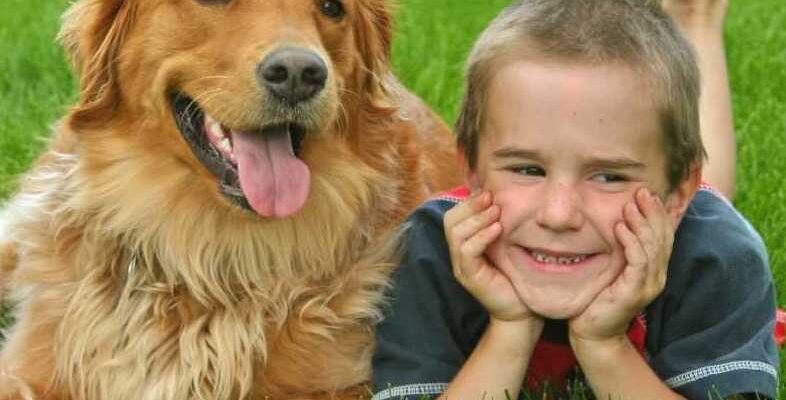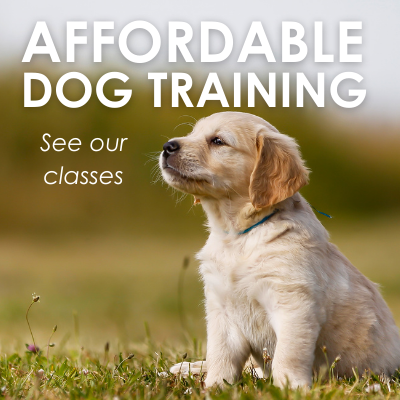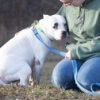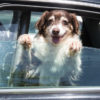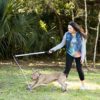This is intended as a broad overview of things to consider with Dog and Toddler and Dog and Preschooler dynamics. These are constantly evolving as a child grows and develops. The challenge here is that dogs rely on predictability and consistent body language in interacting with us and with children change and development happen quickly, particularly in the first 2 years of a child’s life. From a dog’s perspective, babies are confusing and a newly mobile baby or racing toddler is an unpredictable, erratic, worrisome creature.
Please note that because a dog has been “around kids” does not mean that they’re “good with kids” or comfortable with all kids (or with all adults!).
If your dog is exhibiting fear or aggression toward your baby or young child, it is critical to contact a qualified positive reinforcement trainer who can help evaluate the situation and develop a training plan designed to keep everyone safe, while working to minimize the dog’s anxiety.
Also see our article Children and Dogs – Important Information for Parents
General guidelines
Management, full awake adult supervision, firming up a dog’s manners training and safe inclusion of the dog in family activities are critical in promoting safety and also in building trust and long-term bonds between dogs and children.
If you’ve done some work to prepare for your baby’s arrival, continue to work on your dog’s manners and response to cues; your child has added more activities and distractions to your home environment – for both you and the dog.
Continue to improve your awareness of your dog’s body language and how they communicate stress. Just a little education and knowledge of dog body language goes a very long way. Is your dog expressing greater anxiety or discomfort since the baby has arrived?
We encourage families to have prepared their dogs for times of separation in their “kid free” zone early on, so that when it’s needed, it is not stressful for the dog. If families have not prepared ahead to have the dog separated behind a gate, in a crate, or in a different room, the toddler and preschool period may be a very frustrating time. Parents may feel badly separating their dog from their child at times during the day, but too much exposure or stressful encounters can have long-term impact on the relationship between the child and the dog.
Note that interactions between dogs and babies and dogs and toddlers do not have to include physical contact. Observation and just being in the same area are often just enough – for both dog and child. Short and successful interactions are best. Trust and relationships are built in small increments.
Some of the ages and stages of baby and toddler development that can be challenging for dogs are as follows, along with some general suggestions to guide interactions with dogs for each stage and age.
3-6 months
Babies start to reach for and grasp objects, but don’t have controlled release of that grasp. Parents have hair, noses, eyeglasses, earrings, etc. pulled. The baby may start reaching for the dog, reaching into the dog’s space, grabbing fur or ears or reaching toward eyes. Babies are also spending tummy time on the floor, which may have been the romping play space for the dog and adult prior to baby’s arrival. During this period babies also start to roll over, start to get up on knees and elbows or hands, rock back and forth to get ready to crawl.
Guidelines for dog interactions: Dogs should NOT have direct contact with the baby while the baby is on the floor, sitting in a baby seat, or otherwise. Dogs should NOT be encouraged to “explore” or examine the baby. Instead, invite dog to interact while you are holding the baby. If the dog does not want to interact/approach, that’s fine. Don’t force interactions. The child’s contact with the dog should be controlled by the parent or another adult: hand over hand (adult hand over the child’s hand) to gently pet on the dog’s shoulder or back.
6-12 months
Babies begin to sit up, are using new equipment – including things that make noise! Your baby may be crawling, pulling to stand, cruising and climbing. This period is often disconcerting for dogs, who are used to the baby being less active.
Guidelines for dog interactions: Management strategies such as separating the dog behind a baby gate or in a crate become more important as your baby can move toward your dog and into the dog’s personal space. If you have to leave the room, even just to go to the bathroom, separate dog and baby with a physical barrier. You should also be sure to stress to babysitters and other caregivers that they must have the same diligence about not leaving baby and dog alone together. Ever. Children who are practicing walking skills (“cruising”) often pull to stand on furniture… as they’re doing this, is there a dog sleeping on that furniture?
Where is the child? Where is the dog? If you’re not there, you’re not aware.
12-24 months
Dogs who may have adjusted to a crawling baby will now need to adjust to the awkward, unsteady walk of a toddler (and at 15-18 months the walker may be running!).
Guidelines for dog interactions: Management and supervision must be maintained. Discourage children from chasing dogs with push toys or chasing dogs in general.
2-3 year olds
Many two-year-olds are beginning to learn boundaries and are also testing these. Testing and challenging boundaries are normal for children – and often challenging for parents (and dogs).
Guidelines for dog interactions: Begin to introduce concepts around contact with dogs “Soft Touch, Not Too Much” (pat the dog gently); “Dog with a Bone, Leave Him Alone” (don’t bother dogs when they are eating or sleeping); Pat with one hand, collar to tail; Teach “I hug friends, I don’t hug dogs.”
4-5 year olds
Many children of this age are going into preschool or pre-kindergarten/kindergarten. Friends may be visiting – some of whom may not share their homes with dogs or may be in households where dogs are interacted with in a different manner than in your home.
Guidelines for dog interactions: Many kids at 4 years of age can start to become great observers of dog behavior. Good Dog in a Box and DoggoneCrazy have free downloads of videos, coloring sheets, and other educational materials which are great teaching resources. If visiting children are stressful for your dog, give your dog a kid free space to keep everyone safe and calm.
Summary
Teaching a dog to be calm around kids is great but it is just one part of the equation in safe dog-child interactions – it is critical to understand how your child’s developmental stage affects the dog-child interaction.
Children can’t read dog body language consistently until they are well over 7 years of age and then only if they’re living with adults who have helped them learn more about dogs. It’s up to adults to supervise, have management strategies in place, and to help dogs and kids interact safely with one another.
Often families will expect too much of their dogs during various phases of their child’s development. The arrival of a baby and several stages of child development can be exhausting for parents and parents may feel overwhelmed with the demands of parenting. Stress felt by Mom or Dad can spill over or be picked up by the dog.
If you have an issue in your home, meaning that you are concerned for your child’s safety – we strongly suggest that you contact a qualified trainer who uses dog-friendly, positive reinforcement approaches. A qualified trainer can help evaluate the situation and develop a training plan designed to keep everyone safe. Please research any professional who enters your home.
There are big differences between having a pet and parenting with a pet. There can be challenges in the process. Be patient with yourself and your dog.
There are programs and resources set up to support families who share their homes with dogs. Some are listed below.
Learn more
- Family Paws Parent Education – – Dogs & Storks® and Dogs & Toddlers programs
- Dog and Baby Support Hotline 1-877-247-3407
- Dogs and Babies Learning to Live Happily Ever After – Madeline Gabriel blogs
- I Speak Dog a site teaching why dogs do what they do and how to read dog’s body language to understand their emotional states
- Living with Kids & Dogs – by Colleen Pelar – online and print resources, including the book Living with Kids and Dogs without Losing Your Mind – A Parent’s Guide to Controlling the Chaos
- Good Dog in a Box – helping families improve their lives with and for their dogs – online resources and products – many free
- Doggone Crazy – A non-profit organization dedicated to dog bite prevention
About the author
Cathy Reisfield is a parent, grandparent, former clinician, and a nearly 20-year veteran in the field of dog training. She is the founder, head trainer and parent educator at Dependable Dogs® and the non-profit Kids & Dogs: Safer Together. She is also a licensed educator for the Family Paws programs, a member of the Safe Kids Huron Valley coalition, the Washtenaw Council for Children Safe Sleep Task Force, and works with a variety community agencies to educate families and promote injury prevention. Cathy shares her home with her husband of 30+ years and 2 silly Labrador Retrievers.
Reprinted with permission from Cathy Reisfeld




